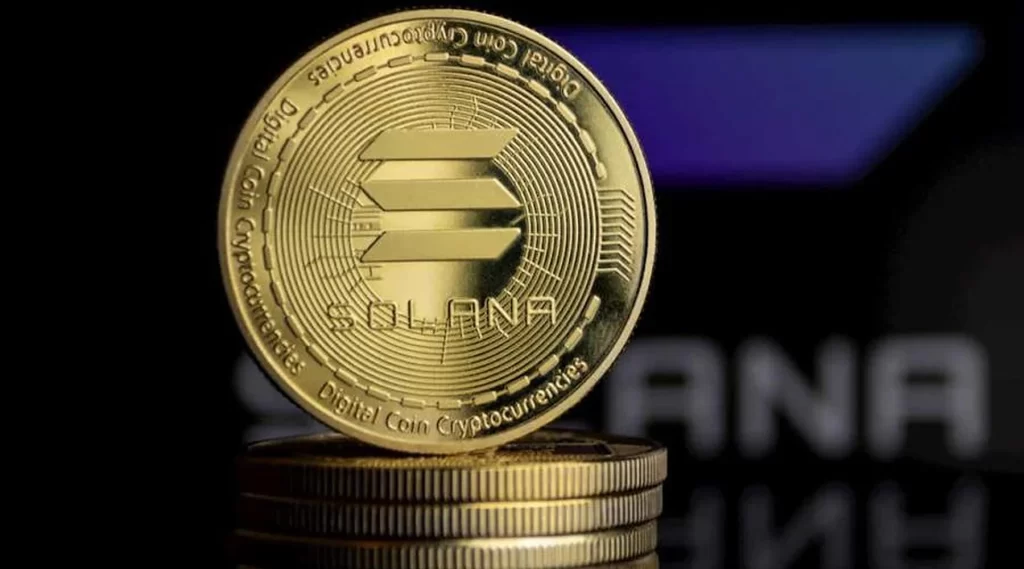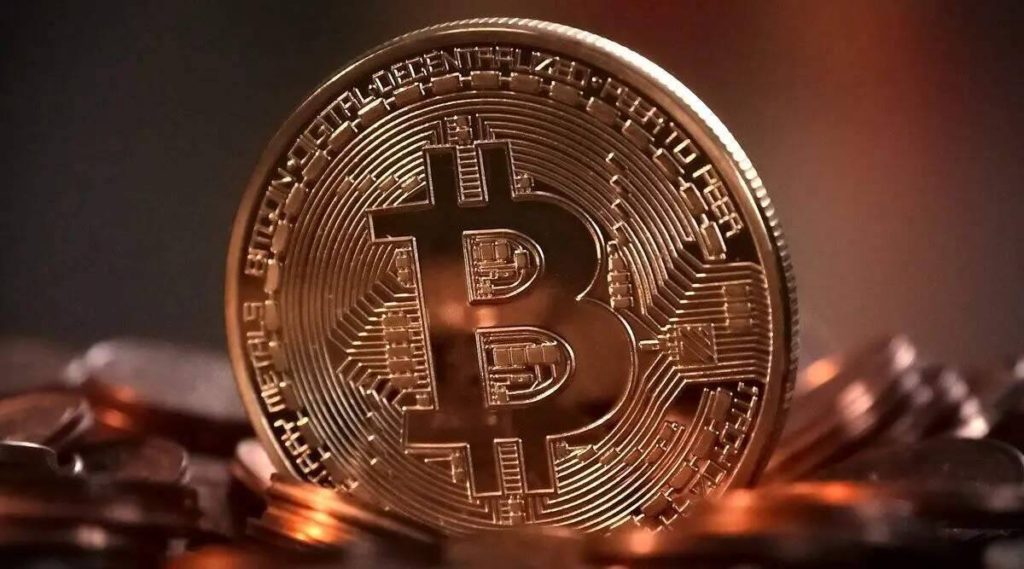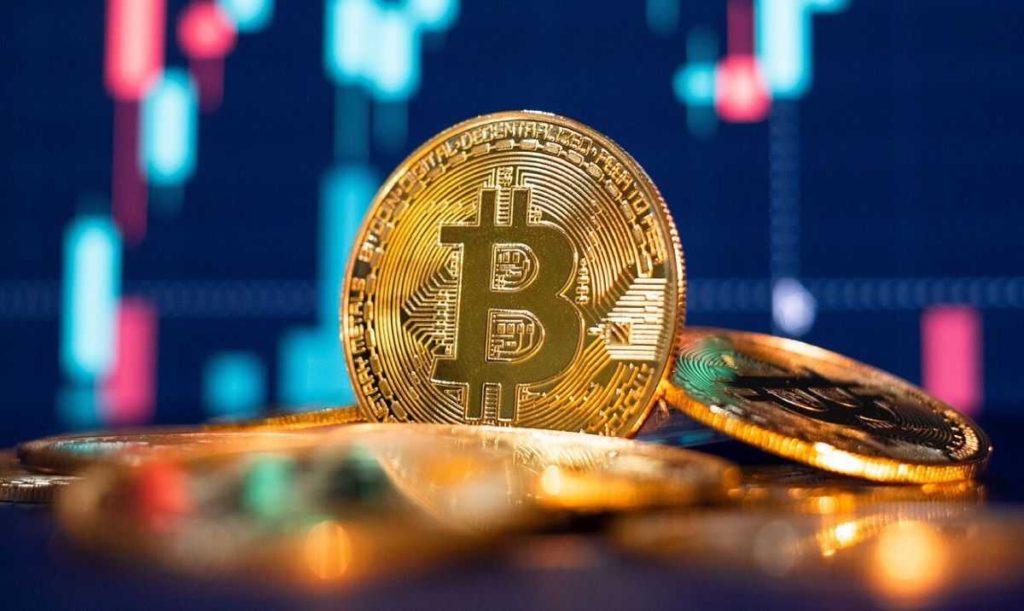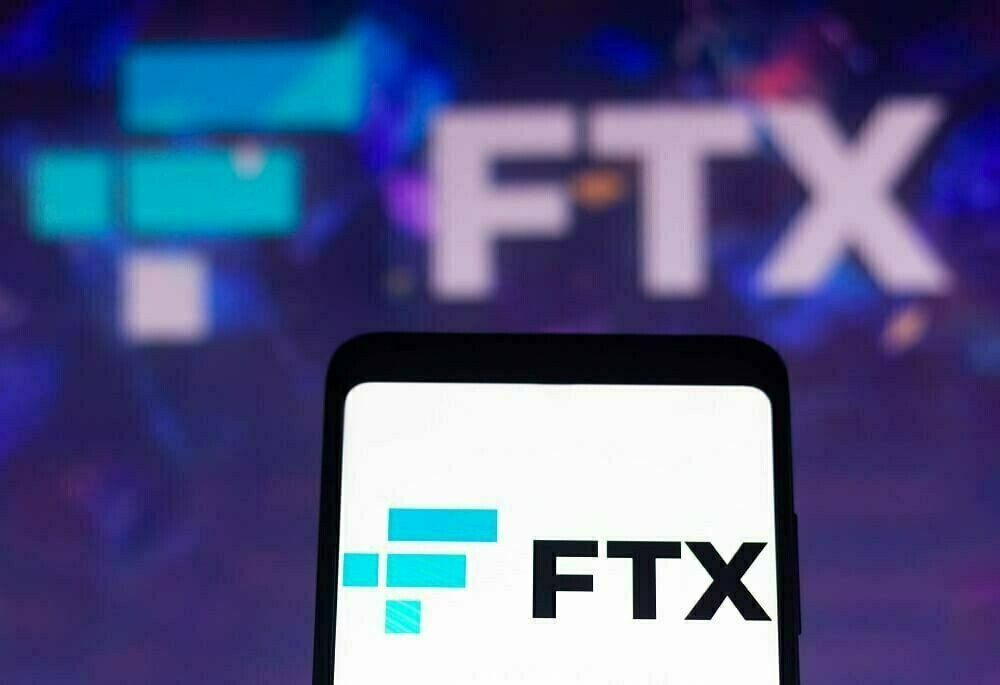Bonk (BONK), a quirky Solana-based memecoin with a canine twist, has vaulted to prominence, securing its spot as the third-largest memecoin by market capitalization.
This remarkable ascent occurred on December 8th, as Bonk’s meteoric rise outstripped the market cap of its fellow memecoin, Pepe.
Over the past month, Bonk has undergone a staggering price surge, accumulating an astonishing 370% growth rate.
This surge propelled its market capitalization to an impressive $762 million, in stark contrast to Pepe’s current market cap of $675 million, as per data from CoinGecko.
During this whirlwind 30-day period, BONK catapulted from a minuscule $0.0000028 to $0.000012. Traders fervently seized the opportunity to capitalize on the newfound enthusiasm surrounding the Solana ecosystem.
What’s particularly noteworthy is that Bonk’s rapid price surge outpaced even more established dog-themed memecoins like Shiba Inu and Dogecoin, which posted comparatively modest gains of 20% and 35%, respectively, in the same timeframe.
READ MORE: EU Reaches Landmark Agreement on Comprehensive AI Regulation
At the time of this report, Bonk has firmly entrenched itself as the third-largest memecoin, trailing only DOGE and SHIB, the leaders of the pack, with market caps of $6 billion and $14.4 billion, respectively.
Several factors underpin Bonk’s remarkable gains. Its listing on prominent centralized exchanges, including Binance and KuCoin, played a pivotal role in expanding its reach.
Moreover, futures data has shown a substantial increase in open interest over the past month, indicating significant trading activity in Bonk derivatives.
This heightened trading activity has contributed to the token’s price volatility.
Bonk initially debuted on December 29, 2022, and astoundingly witnessed a 3,766% surge within its first week of trading, despite the bearish conditions prevailing in the market.
Following this remarkable ascent, Bonk’s value gradually dwindled, with its price remaining near its all-time lows for nearly a year.
However, the tides began to turn on October 21, 2023, when Bonk exhibited signs of resurgence, experiencing a dramatic surge in value.
Since that pivotal date, Bonk has skyrocketed by a staggering 6,215%, solidifying its position as the most high-performing mid-cap memecoin in the past three months.
Google’s recent demonstration of its new artificial intelligence model, Gemini, has sparked controversy and accusations of deception.
The six-minute video, which gained widespread attention on YouTube with 2.1 million views since its release on December 7th, initially showcased Gemini interacting seamlessly with a human operator in apparent real-time, including tasks like analyzing a duck drawing, responding to hand gestures, and inventing a game called “Guess the Country” based on an image of the world map.
However, Google DeepMind executive Oriol Vinyals has since clarified that while the user inputs and outputs in the video were authentic, they had been edited for brevity.
In reality, Gemini’s interactions were text-based, not voice-based, and took significantly longer than depicted in the video.
Google had even included a disclaimer on the YouTube video, acknowledging that latency had been reduced and Gemini’s outputs shortened for the demonstration.
Despite these clarifications, Google faced severe backlash on social media, with some accusing the tech giant of lying and manipulating the demonstration to exaggerate Gemini’s capabilities.
READ MORE: Taiwan’s Central Bank Explores Wholesale CBDC as Part of ‘Banking 4.0’ Vision
Even some Google employees expressed dissatisfaction with the video, asserting that it painted an unrealistic picture of Gemini and highlighted how easily AI tools could appear more advanced than they truly are.
While one Google employee argued that some degree of marketing is necessary to promote such products, another defended the video by stating that individual words in Gemini’s responses were not altered, and the voiceover accurately represented excerpts from the actual text prompts used during the demonstration.
Upon its release, the Gemini “hands-on” tech demo had initially received praise from observers who marveled at its apparent human-like interactions and abilities.
Google positioned Gemini as a competitor to OpenAI’s ChatGPT, claiming it outperformed leading AI models in 30 out of 32 benchmarks assessing reasoning, mathematics, language, and other metrics, even surpassing GPT-4 in seven out of eight of these benchmarks.
In summary, Google’s Gemini AI demonstration, initially celebrated for its impressive capabilities, has come under scrutiny due to allegations of deceptive editing and misrepresentation of the AI model’s true performance.
The controversy highlights the challenges and ethical considerations surrounding the presentation of AI technology to the public.
Venus, a decentralized finance (DeFi) protocol, acknowledged that it faced an issue with one of its price feed oracles on December 11th, resulting in borrowings amounting to approximately $270,000.
Despite being described as an exploit by some analysts, the platform downplayed the incident and committed to replacing the funds from its treasury.
Reports emerged on December 10th, indicating that a malfunctioning price oracle had affected the decentralized lending and borrowing marketplace based on the Binance Smart Chain.
A Twitter user, SaulCapital, informed followers of an issue with the “isolated pool on Venus Protocol for liquid staked BNB,” and shared a link to a wallet address associated with the incident, which held just under $260,000 at the time.
In response to these reports, Venus Protocol’s ambassador, NoOneVII, suggested that it was more of an “Oracle price issue” occurring in a small isolated market.
He reassured users that the Venus Core Pool and other pools were separate and unaffected by this problem, emphasizing that there was no security breach.
Brad, the Head of Venus Labs, confirmed that the Binance oracle had reported incorrect prices, resulting in approximately $200,000 in borrowings.
READ MORE: Best Crypto-Focussed PR Agency – Prices and Review
Venus Protocol assured its community that the “$snBNB price feed is back to normal, Core Pool, and other markets are unaffected, and funds are SAFU (Secure Asset Fund for Users).”
Furthermore, Venus Protocol announced that the community would propose an immediate injection of liquidity from the treasury into the affected pool, totaling around $274,000.
This move would support the recovery of funds from the pool, with the assistance of partners.
Despite the incident, the total value locked in the DeFi protocol, launched in 2020, remained unaffected and stood at $738 million at the time.
The platform’s native token, Venus (XVS), experienced a 17.5% decrease in value over the past 24 hours, trading at $9.56, although this decline was partly attributed to the broader cryptocurrency market sell-off.
In conclusion, Venus Protocol faced a price oracle issue resulting in borrowings of $270,000, but it assured users of the security of its other pools and pledged to replace the funds from its treasury.
The incident did not significantly impact the total value locked in the protocol, and the token’s price decline was in line with market trends.
Google, the tech giant, is set to revise its cryptocurrency-related advertising policy to include advertisements for cryptocurrency trusts, starting from the end of January 2024.
This change coincides with the anticipated approval of spot Bitcoin exchange-traded funds (ETFs) in the United States in the same month.
In a policy update dated December 6, Google announced that its advertising policy for cryptocurrencies and related products would be adjusted on January 29, 2024, to permit advertisements from “advertisers offering Cryptocurrency Coin Trust targeting the United States.”
Cryptocurrency coin trusts were mentioned as examples of financial products that enable investors to trade shares in trusts holding substantial amounts of digital currency, which likely encompasses ETFs.
Google emphasized that advertisers must comply with local laws in the regions they target with their ads. This policy will apply universally to all accounts advertising these products.
READ MORE: Krist Novoselic Urges Microsoft to Reevaluate Generative AI Approach in Shareholder Proposal
Prospective advertisers for cryptocurrency trusts will need to be Google-certified, which involves obtaining the necessary licenses from local authorities and ensuring that their products, landing pages, and ads adhere to the legal requirements of the respective countries or regions where they seek certification.
While Google already allows advertising for certain cryptocurrency and related products, it continues to prohibit ads for cryptocurrency or nonfungible token (NFT)-based gambling platforms, initial coin offerings (ICOs), decentralized finance protocols, and services offering trading signals.
This policy shift aligns with Bloomberg’s ETF analysts’ prediction of a 90% likelihood of the approval of a U.S. spot Bitcoin ETF by January 10, 2024, with the potential for several pending applications to be approved simultaneously.
Currently, there are 13 Bitcoin ETF applicants, and detailed information about their approval processes remains limited.
Numerous fund managers, including BlackRock, Grayscale, and Fidelity, have reportedly engaged with the U.S. Securities and Exchange Commission (SEC) to discuss crucial technical aspects of their ETF proposals.
The cryptocurrency market is optimistic about these approvals, as evidenced by Bitcoin’s nearly 74% price increase in the past 90 days. Some analysts even anticipate a new all-time high for Bitcoin in 2024.
Google, the tech giant, is set to update its advertising policy related to cryptocurrencies, allowing advertisements for cryptocurrency trusts targeting the United States starting from January 29, 2024.
This policy shift aligns with predictions that spot Bitcoin exchange-traded funds (ETFs) will gain approval in the United States in the same month.
In a policy change log dated December 6, Google clarified that it will permit advertisements from “advertisers offering Cryptocurrency Coin Trust targeting the United States.”
Cryptocurrency coin trusts refer to financial products that enable investors to trade shares in trusts holding significant amounts of digital currency, possibly including ETFs.
Google emphasized that all advertisers must adhere to local laws in the areas where their ads are targeted.
This updated policy will apply globally to all accounts advertising these cryptocurrency-related products. To advertise crypto trusts, potential advertisers must be Google-certified, which necessitates having the appropriate license from the relevant local authority.
Their products, landing pages, and ads must also comply with the legal requirements of the specific country or region they wish to target.
READ MORE: Taiwan’s Central Bank Explores Wholesale CBDC as Part of ‘Banking 4.0’ Vision
It’s worth noting that Google already permits advertising for certain cryptocurrency and related products but excludes ads for crypto or nonfungible token (NFT)-based gambling platforms, initial coin offerings (ICOs), decentralized finance (DeFi) protocols, and services offering trading signals.
This policy adjustment is timely, as Bloomberg’s ETF analysts have assigned a 90% probability of a U.S. spot Bitcoin ETF receiving approval by January 10, 2024.
Multiple pending ETF applications could potentially be approved simultaneously. Currently, there are 13 Bitcoin ETF applicants, and detailed information about their approval processes remains limited.
Several prominent fund managers, such as BlackRock, Grayscale, and Fidelity, have reportedly engaged with the U.S. Securities and Exchange Commission to discuss critical technical aspects of their ETF proposals.
The cryptocurrency market anticipates these approvals with enthusiasm, as Bitcoin has surged by nearly 74% in the past 90 days. Analysts even predict the possibility of a new all-time high for Bitcoin in 2024.
This shift in Google’s advertising policy aligns with the evolving landscape of cryptocurrency investments and reflects the growing interest in digital assets among investors.
After a devastating exploit on November 22nd, crypto investors have been rapidly withdrawing their assets from the cryptocurrency exchange formerly known as Huobi, now rebranded as HTX.
This breach resulted in the exchange suspending its services and incurring losses amounting to $30 million.
In the aftermath, between November 25th, when HTX resumed its services, and December 10th, a staggering $258 million in net outflows were recorded, as per data sourced from DefiLlama.
DefiLlama’s data further reveals that HTX’s reserves are comprised of 32.3% Bitcoin and 31.8% Tron (TRX), which is the native currency of the Tron network, established by Justin Sun in 2017.
Despite the turmoil, HTX, as of the time of this report, remains the 16th largest cryptocurrency exchange in terms of daily trading volume, boasting a total trading volume of $1.6 billion over the last 24 hours, according to CoinMarketCap.
In a bid to reassure affected HTX users, Sun, the founder of Tron, pledged full compensation for losses incurred from the hot wallet breach and assured the public that an investigation was already in progress.
READ MORE: Taiwan’s Central Bank Explores Wholesale CBDC as Part of ‘Banking 4.0’ Vision
Sadly, this incident was not an isolated event for HTX and related entities under the Sun umbrella. Over the past two months, they have been plagued by a total of four hacks.
The initial breach occurred shortly after the exchange’s rebranding to HTX on September 24, 2023, with an unknown assailant making off with nearly $8 million in cryptocurrency.
The most significant of these breaches was the $100 million exploit that targeted the Poloniex exchange on November 10th, attributed to a compromise of private keys.
Another substantial breach hit HTX’s HECO Chain bridge on November 22nd, where hackers compromised the bridge and funneled at least $86.6 million to suspicious addresses.
November 2023 was a bleak month for the cryptocurrency world, witnessing a surge in theft as malicious actors pilfered a total of $363 million in ill-gotten digital assets.
Cointelegraph reached out to HTX for a statement, but at the time of reporting, no response had been received.
These ongoing security breaches have cast a shadow of doubt over the safety and trustworthiness of the HTX exchange and related platforms, prompting investors to move their assets elsewhere.
Cyvers, a prominent blockchain security firm, recently uncovered a suspicious movement of $50 million in HAXcoin (HXA), the native utility token of the Herencia Artifex nonfungible token (NFT) project.
This significant transfer of funds was linked to an entity known as the KyberSwap exploiter, raising concerns in the cryptocurrency community.
The KyberSwap exploiter obtained these tokens by exploiting the “transfer from function” within the Ethereum network.
The “transfer from” function is commonly utilized by decentralized application users, allowing one party to transfer tokens from the balance of another party to a third-party address.
However, misuse or vulnerabilities in the implementation of such functions can lead to security vulnerabilities.
Cyvers, in its report, suggests that the security breach may be associated with a potential flaw in the Multicall function, a component of the thirdweb libraries integrated into the HXA token’s smart contract.
Cyvers encourages interested parties to actively participate in the investigation to comprehensively understand the extent and repercussions of this exploit.
READ MORE: Krist Novoselic Urges Microsoft to Reevaluate Generative AI Approach in Shareholder Proposal
The Cyvers team has also revealed that the funds acquired by the KyberSwap exploiter have been dispersed among various externally owned accounts, which are now recognized as the top HXA tokenholders. This distribution adds complexity to tracking and recovering the stolen assets.
Meanwhile, cryptocurrency exchange MEXC has taken a precautionary measure by temporarily suspending HXA token withdrawals and deposits.
However, this halt is not directly linked to security concerns arising from the hack but rather stems from unusual on-chain activities related to HXA, as reported by the exchange.
In an unexpected development, the official website of HAXcoin, hxacoin.io, is currently inaccessible, leaving investors and stakeholders without access to official information and updates.
This further complicates the situation and raises suspicions regarding the project’s integrity and transparency.
This incident follows a recent hack that saw hackers siphon off approximately $46 million in cryptocurrency assets from the decentralized KyberSwap exchange.
The cumulative impact of such security breaches highlights the need for enhanced security measures within the cryptocurrency ecosystem, urging industry participants to remain vigilant and proactive in safeguarding digital assets and user interests.
On December 11, 2:15 am UTC, the price of Bitcoin briefly dipped below the $41,000 mark, experiencing a sudden 6.5% drop from $43,357 to as low as $40,659 within a mere 20 minutes.
However, as of the latest TradingView data, Bitcoin has made a slight recovery, trading at around $41,960 after hitting the local low.
Ether, the second-largest cryptocurrency by market capitalization, also faced a sharp decline during the same timeframe, plummeting by more than 8.9%.
Presently, the price of ETH has stabilized at $2,233, reflecting a 5.3% decrease on the day. Other prominent cryptocurrencies like BNB, XRP, and Solana have also witnessed losses in value.
According to data sourced from CoinGlass, this abrupt drop led to the liquidation of long positions worth more than $270 million.
Additionally, it wiped out approximately $1.2 billion in open interest related to BTC, which currently stands at about $17.9 billion.
READ MORE: EU Reaches Landmark Agreement on Comprehensive AI Regulation
Interestingly, this price decline occurred just moments after Scott Melker of Wolf of All Street had remarked on Bitcoin closing its eighth consecutive green weekly candle, playfully asking, “When correction, sir?”
This recent drawdown constitutes the most significant single-day decline for Bitcoin in over a month, despite the asset’s impressive growth of more than 12% over the past 30 days.
Notably, Bitcoin has seen a remarkable rally of over 150% since the beginning of the year.
This uptrend has been primarily fueled by the anticipation that the United States Securities and Exchange Commission (SEC) will greenlight several spot Bitcoin exchange-traded funds (ETFs).
This approval would provide large institutions with a substantial avenue for exposure to the cryptocurrency for the first time.
Another contributing factor to Bitcoin’s rally is the prevailing market expectation that the U.S. Federal Reserve will commence interest rate cuts around the middle of 2024.
Investors are also gearing up for the release of the next round of inflation data and the final Federal Open Market Committee (FOMC) meeting of 2023.
Analysts largely anticipate improvements in core inflation and are betting on the Fed maintaining the current interest rate levels.
Over the course of four days, wallets connected to the now-defunct crypto trading firms, FTX and Alameda Research, orchestrated the movement of a staggering $23.59 million worth of digital assets onto some of the most prominent cryptocurrency exchanges.
This revelation came to light thanks to the diligent work of blockchain analytics firm Spot On Chain, which uncovered that these defunct entities had been orchestrating a series of transfers amounting to a whopping $591 million since October 24th.
Remarkably, these transfers involved a total of 59 different cryptocurrency tokens.
In the latest wave of transfers linked to FTX wallets, the sum of $23.59 million was distributed across 19 tokens.
Among these tokens, 3,150 Ether valued at $6.8 million, 59.6 million Aleph.im (ALEPH) worth $6.41 million, $2.48 million in Curve DAO (CRV) tokens, $990,000 in Avalanche, and $848,000 in Chainlink’s LINK were prominently featured.
Intriguingly, this movement also encompassed $6.07 million in a diverse range of assets, including Pundi X (PUNDIX), Reserve Rights (RSR), Dogecoin, Bitcoin Cash, Chromia (CHR), Axie Infinity, Polygon’s MATIC, Uniswap, Orbs (ORBS), Frax Share (FXS), Polkadot, STEPN, 1inch (1INCH), and Solana.
READ MORE: Bitcoin Rally Continues But Concerns About Pullback Loom
These assets were subsequently funneled into major exchanges like Binance, Coinbase, OKX, and Galaxy Digital OTC.
The financial maneuverings began on October 24th when both FTX and Alameda wallets initiated a $10 million transfer to a single wallet address, which was subsequently distributed to Binance and Coinbase accounts.
A similar transaction took place on November 1st, involving $13.1 million being channeled into Binance and Coinbase accounts.
This movement of funds has its origins in March when FTX and Alameda embarked on the journey to recover assets for their investors.
During that period, three wallets associated with FTX and Alameda Research shifted $145 million worth of stablecoins onto various platforms, including Coinbase, Binance, and Kraken.
While these revelations demonstrate a significant recovery of over $5 billion in cash and liquid cryptocurrencies by the troubled cryptocurrency exchange, FTX, there is still a substantial outstanding liability of $3.8 billion that remains unresolved.
The crypto world continues to watch closely as the intricate web of financial transactions unfolds.
On December 8, Lifinity, a decentralized exchange (DEX), experienced a significant setback when an arbitrage bot drained its LFNTY-USDC liquidity pool, resulting in a loss of $699,090.
The incident was attributed to an unexpected response from a failed trade, as reported in Lifinity’s Discord channel.
The ordeal unfolded when an arbitrage bot embarked on a complex trading route, involving USDC, xLFNTY, LFNTY, and USDC, aiming to exploit price disparities between various trading pairs.
The bot executed an Immediate-or-Cancel (IOC) market order on Serum v3, a type of order that requires immediate execution at the prevailing market price upon being filled. Orders unable to be executed immediately are typically canceled.
However, instead of returning an error as expected, the bot’s request yielded a 0 amount output.
This unforeseen outcome caused the liquidity pool to process the 0 amount, subsequently updating the last transaction price to 0 and setting the next starting price to the same value.
While the actual price on the constant product curve (CP curve) wasn’t zero, the pool offered an exceptionally low price, making it vulnerable to a drain.
READ MORE: Binance Abu Dhabi Withdraws Application with Regulator Amidst Expansion Plans
Lifinity v1 functions as an automated market maker (AMM), employing algorithms to create liquidity in trading pairs. It relies on the constant product market maker (CPMM) model to maintain balance between two token quantities within a liquidity pool.
This approach is also used by other DEXs like Uniswap and Bancor.
While Lifinity v1 does not directly employ the standard constant product (CP) curve found in traditional CPMMs, it replicates its functionality.
The bug in this case allowed the arbitrage bot to exploit the discrepancy and deplete the funds.
Efforts are now underway to address the situation, with Lifinity’s team working on restoring liquidity to the affected pool.
Additionally, they are reviewing the protocol code and exploring options for fund recovery.
To prevent future incidents, the DEX has implemented a new measure: trades resulting in 0 amounts are no longer accepted.
Contrary to initial concerns, the incident does not appear to be the result of an external attack, as clarified by a community member on social media.
While Cointelegraph reached out to Lifinity’s team for comment, an immediate response was not received, leaving the community awaiting further updates on the situation.













